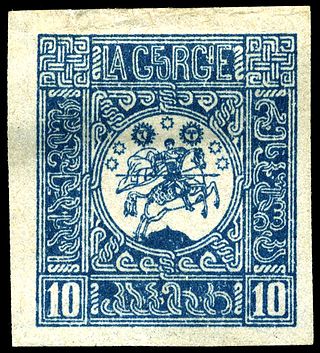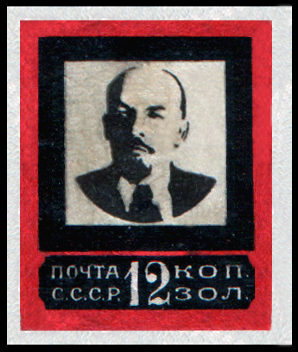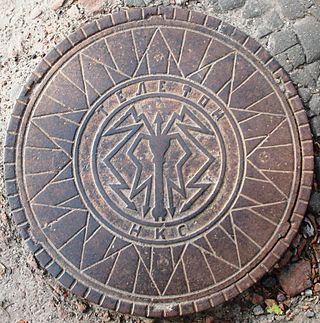![Vladimir Lenin on a Soviet definitive stamp of 1961. Designed by Pyotr Vasilyev [Wikidata] 1961 CPA 2575.jpg](http://upload.wikimedia.org/wikipedia/commons/thumb/7/7d/1961_CPA_2575.jpg/160px-1961_CPA_2575.jpg)
Definitive stamps of the Soviet Union were the regular postage stamp issues produced in the USSR between 1923 and 1992.
![Vladimir Lenin on a Soviet definitive stamp of 1961. Designed by Pyotr Vasilyev [Wikidata] 1961 CPA 2575.jpg](http://upload.wikimedia.org/wikipedia/commons/thumb/7/7d/1961_CPA_2575.jpg/160px-1961_CPA_2575.jpg)
Definitive stamps of the Soviet Union were the regular postage stamp issues produced in the USSR between 1923 and 1992.
The inaugural release of the Soviet Union definitive stamps took place in October 1923, commonly referred to as the Gold Standard issue. These stamps prominently featured the busts of a worker, a Red Army man, and a peasant. Over the course of the years 1923 to 1926, the worker and soldier designs appeared on thirteen different stamps each, while the peasant design was featured on ten stamps. [1]
In 1929, the Soviet Union released its third set of definitive stamps. This series featured updated images depicting male and female workers, male and female collective-farm workers, and a Red Army soldier. These designs reflected the significant societal transformations brought about by industrialization, collectivization, and the advancement of women's rights in the Soviet Union. Notably, the inclusion of the female worker and female collective-farm worker alongside their male counterparts marked the first appearance of women on Soviet stamps. [1]
With the progress of the socialistic economic programs, the representation of the major groups of Soviet society changed, moving from the more generic image of the earlier period. The worker was shown in the fifth issue of March 1939 as a steel foundryman and in the sixth issue of August 1939 as a miner. [1]
The last definitive series that begun in the Stalin period was the eighth issue (May 1948 to July 1957). It was remarkable by the fact that the scientist was for the first time portrayed on Soviet definitive stamps. In 1958, the engineer design appeared meaning that representatives of other Soviet labouring groups were also depicted on stamps. In 1961, a definitive stamp with the combine worker appeared. [1]
This table represents an outline of the overall USSR definitive issues produced in the Soviet and post-Soviet times (1923 – 1992).
| Issue No. | Dates | CPA Catalogue No. | Stamp example |
|---|---|---|---|
| 11 October 1923 – January 1928 | 99–194 251–270 275–280 |  | |
2 | October 1927 – October 1928 | 281–295 |  |
3 | August 1929 – January 1941 | 314–346 |  |
4 | 1936–1953 | 556–559 |  |
5 | March – August 1939 | 667–669 |  |
6 | August 1939 – December 1956 | 693–701 |  |
7 | 22 May 1948 – September 1954 | 1247–1255 |  |
8 | 16 October 1948 – 1959 | 1379–1388 |  |
| 18 August 1958 – March 1960 | 2217–2223 |  | |
10 | 1 January 1961 – August 1966 | 2510–2520 |  |
11 | 25 October 1966 – April 1969 | 3414–3437 | |
12 | 10 August – 17 December 1976 8 September – November 1977 4 August 1978 | 4599–4610 4733–4744 4853–4867 |  |
13 | 1 December 1980 25 April 1982 12 December 1982 28 December 1982 20 May 1983 15 May 1984 5 September 1984 20 January 1986 25 June 1991 22 August 1991 19 November 1991 20 April 1992 | 5136 5287 5340 5357 5392 5510 5548–5551 5699 6332 5549А 6375 5549.I |   |
14 | 22 December 1988 25 December 1989 13 March – 25 June 1991 | 6013–6024 6145–6156 6298–6301 |  |

This a survey of the postage stamps and postal history of the Russian Empire, the Soviet Union and the modern Russian Federation.

Illegal stamps are postage stamp–like labels issued in the names of existing independent countries or territories used to defraud postal administrations, stamp collectors, and the general public. Often, but not always, a member nation of the Universal Postal Union (UPU) will have asked the UPU to issue an "International Bureau Circular" advising others of the illegal stamps. According to the UPU, the market is estimated to be at least $500 million per year.

The postage stamps and postal history of Armenia describes the history of postage stamps and postal systems in Armenia. Czarist Russian postmarks and stamps were in used in the territory of Armenia from 1858. The early postmarks were composed of dots in different shapes. Dated postmarks with city names soon followed. Many counterfeit postmarks are known. From 1909 until 1918 a few Russian stamps were overprinted identifying the Armenian Post. The Armenian letters H & P are intertwined, representing the initials of hai post, the Armenian Post Office.

This is a survey of the postage stamps and postal history of Estonia. The stamps of Estonia are issued by the postal administration Eesti Post which is the country's only provider of universal postal services.
Soviet Union stamp catalogue is a national catalogue of the RSFSR and USSR postage stamps and miniature sheets, which was being published in the USSR by the “Soyuzpechat” Central Philatelic Agency (CPA) and some other publishers related to the Ministry of Communications. The catalogue usually republished in corpore around once in a 10–15 years. In between republications, additional issues came out every year. These issues contains descriptions of stamps and miniature sheets issued in USSR last year.

The postage stamps and postal history of Azerbaijan describes the history of postage stamps and postal systems in Azerbaijan, which closely follows the political history of Azerbaijan, from its incorporation to the Russian Empire in 1806, to its briefly obtained independence in 1918, which it lost to the Soviet Union in 1920 and re-acquired in 1991 after the fall of the Soviet Union.

This is a survey of the postage stamps and postal history of Georgia.

This is a survey of the postage stamps and postal history of Ukraine.

The Ministry of Communications of the Union of Soviet Socialist Republics (USSR) (Russian: Министерство связи СССР) was the central state administration body on communications in the Soviet Union from 1923 to 1991. During its existence it had three names: People's Commissariat for Posts and Telegraphs (1923–32), People's Commissariat for Communications (1932–46) and Ministry of Communications (1946–1991). It had authority over the postal, telegraph and telephone communications as well as public radio, technical means of radio and television broadcasting, and the distribution of periodicals in the country.

People's Commissariat for Posts and Telegraphs of the RSFSR, known shortly as the Narkompochtel, was the central organ of government of the RSFSR that was in charge of the organisation and development of the different forms of communication, including postal service. It was founded in Petrograd on 7 November [O.S. 25 October] 1917 from the Russian Ministry of Posts and Telegraphs and retained its organisational structure.

In philately, Leniniana is a topic for collecting postage stamps that tell about the life and story of Vladimir Lenin (1870–1924) or people, places, etc. connected with him. The topic was common in the Soviet Union.

The Gold Standard issue or Small Head issue was the first definitive series of postage stamps issued by the Soviet Union between 1923 and 1927. The stamps were designed by Ivan Shadr.

Postage rates in Russia have changed multiple times in the period 1917 to present. They have been introduced by the Soviet and Russian Federation governmental organs and agencies and reflected in alteration of stamp denominations.

The first USSR stamps or First All-Russia Agricultural Exhibition issue appeared in August 1923 as a series of Soviet Union postage stamps. Its designer was the Russian artist Georgy Pashkov.

The 70r Red Army Soldier error or RSFSR 70r error of 1922 is one of the rarest postage stamps issued by Soviet Russia. Due to the double printing error, one cliché of the imperforate 25-stamp sheet has a 70-ruble value instead of the correct 100-ruble. Only four intact complete sheets are known.

Stamps of the Soviet Union were issued in the period 1923 to 1991. They were labeled with the inscription Russian: "Почта СССР". In the thematics, Soviet stamps reflected to a large extent the history, politics, economics and culture of this world's first socialist state.

The People's Commissariat for Communications of the USSR was the central state agency of the Soviet Union for communications in the period 1932 to 1946. The Commissariat administered the postal, telegraph and telephone services.

Definitive stamps of Russia are the regular postage stamp issues produced in the Russian Empire and RSFSR between 1857 and 1923, and in the Russian Federation since 1992.

Nikolai Demyanovich Psurtsev was a Soviet statesman and military leader, Colonel General of the Communication Troops, Minister of Communications of the Soviet Union.